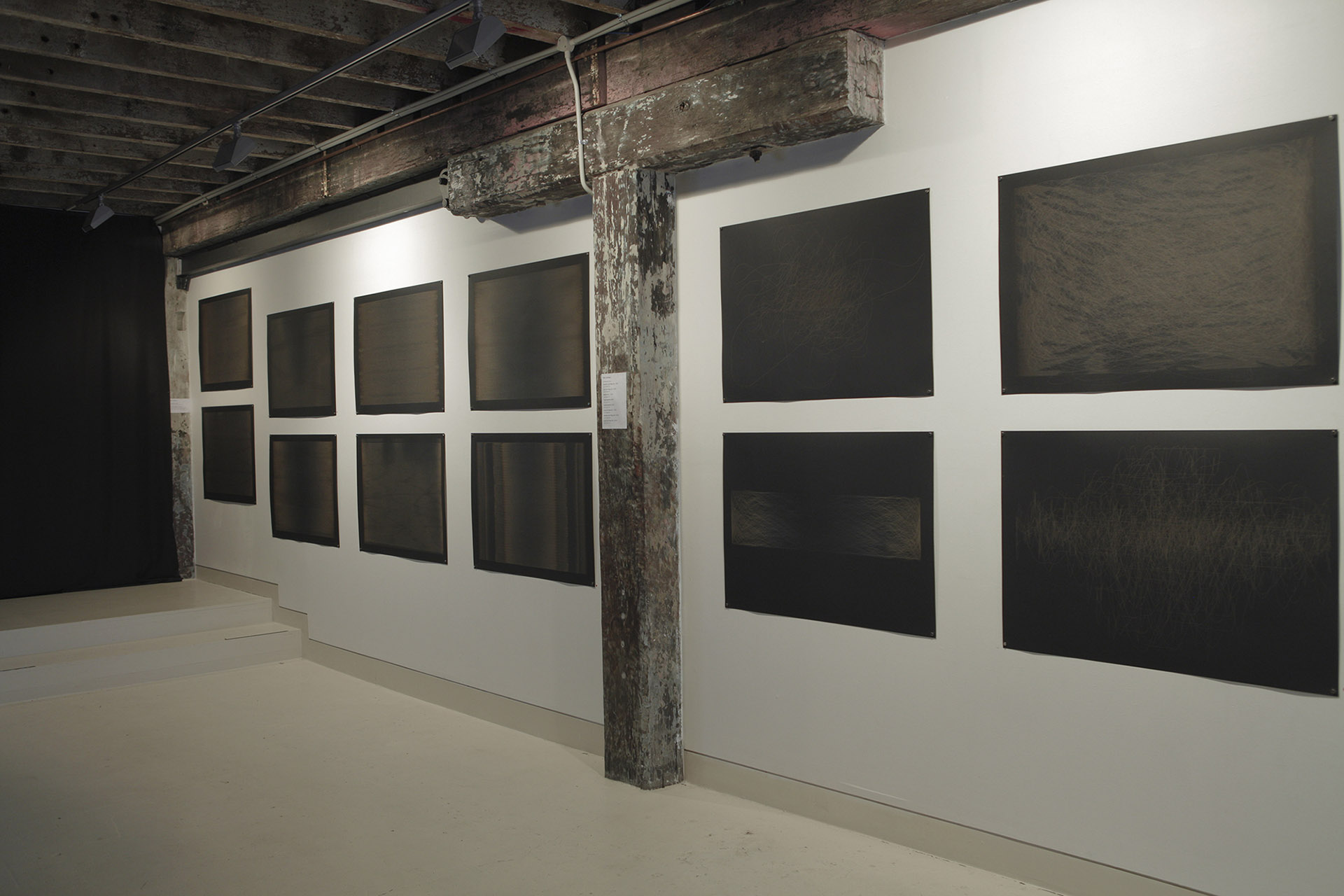I’ve been drawing with a laser since the beginning of the year and all the work in this exhibition was produced, in one way or another, using a 445nm laser. 445nm is the frequency of light and, as you can see in the video below, it is in the blue part of the visible spectrum. Blue lasers were invented in the 1990s by Shuji Nakamura who won the 2014 Nobel Prize in physics for his work. From around 2010 these lasers have become accessible in terms of their cost due to their use in laser data projectors.
These lasers are a bit like arc welders in the sense that their bright light can damage your eyes if you don’t use the right safety gear. The goggles I use for this laser make everything orange, effectively canceling a significant amount of the blue energy of the laser. You’ll notice in this video that I have a shroud around the beam as an extra safety feature:
You can see here that the machine is moving quite slowly. There are many variables that will influence how quickly the laser burns into particular materials. An important one is the reflectivity of the material itself. If I was working with white paper I would have to move the machine even slower to burn a mark. The fact that black paper doesn’t reflect as much energy makes the process of drawing with a laser far more fluid. In fact with black paper I can still get some nice marks even when the machine is moving relatively quickly as you can see in the work Grasping Light (2016-2017).
Blue lasers are at the shorter end of the spectrum of semiconductor lasers which allows them to be focused into a smaller point than lasers with a longer wavelength. In practice optics, rather than the wavelength of the laser, play a far greater role in determining how finely a particular laser can be focused. The theoretical minimum spot size with a perfect lens is orders of magnitude smaller than what you actually get with an affordable lens. Nevertheless there are some very fine lines in these drawings down to around .05mm. In fact the lines are too fine for the camera to resolve at the distance that this photograph was taken from:
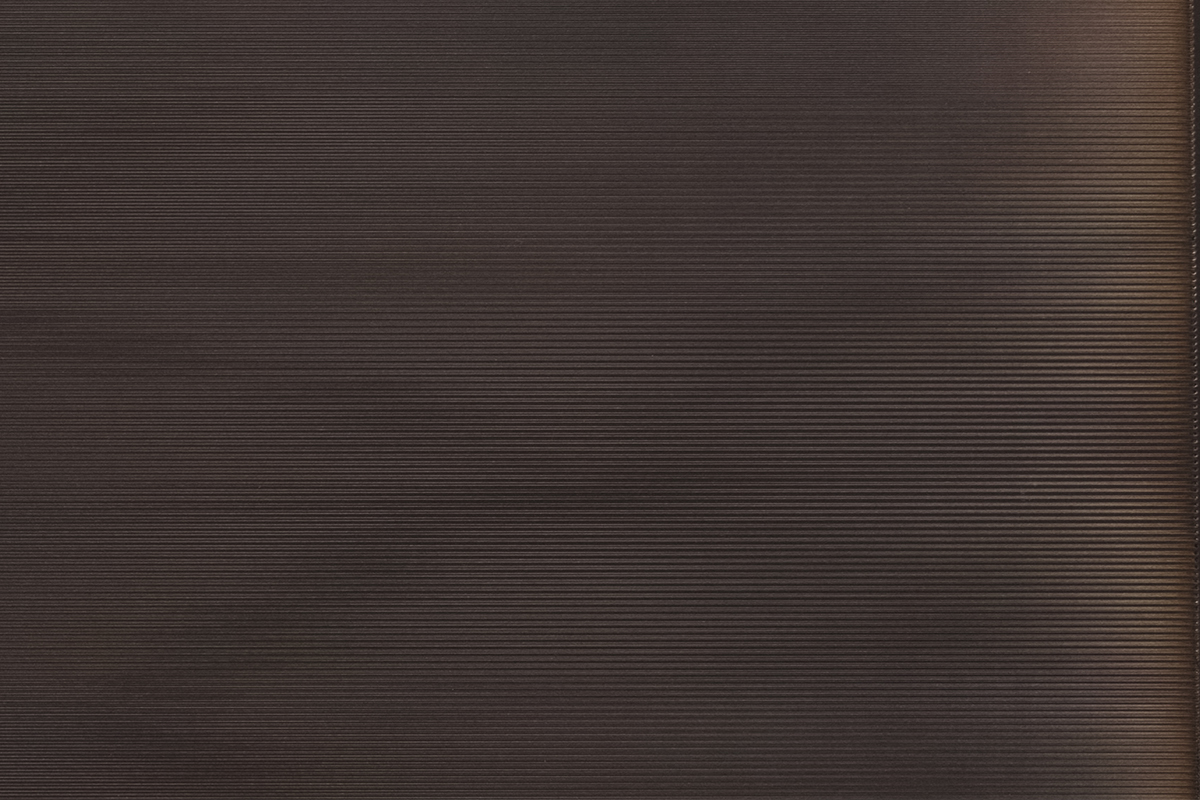
Here is the full drawing:
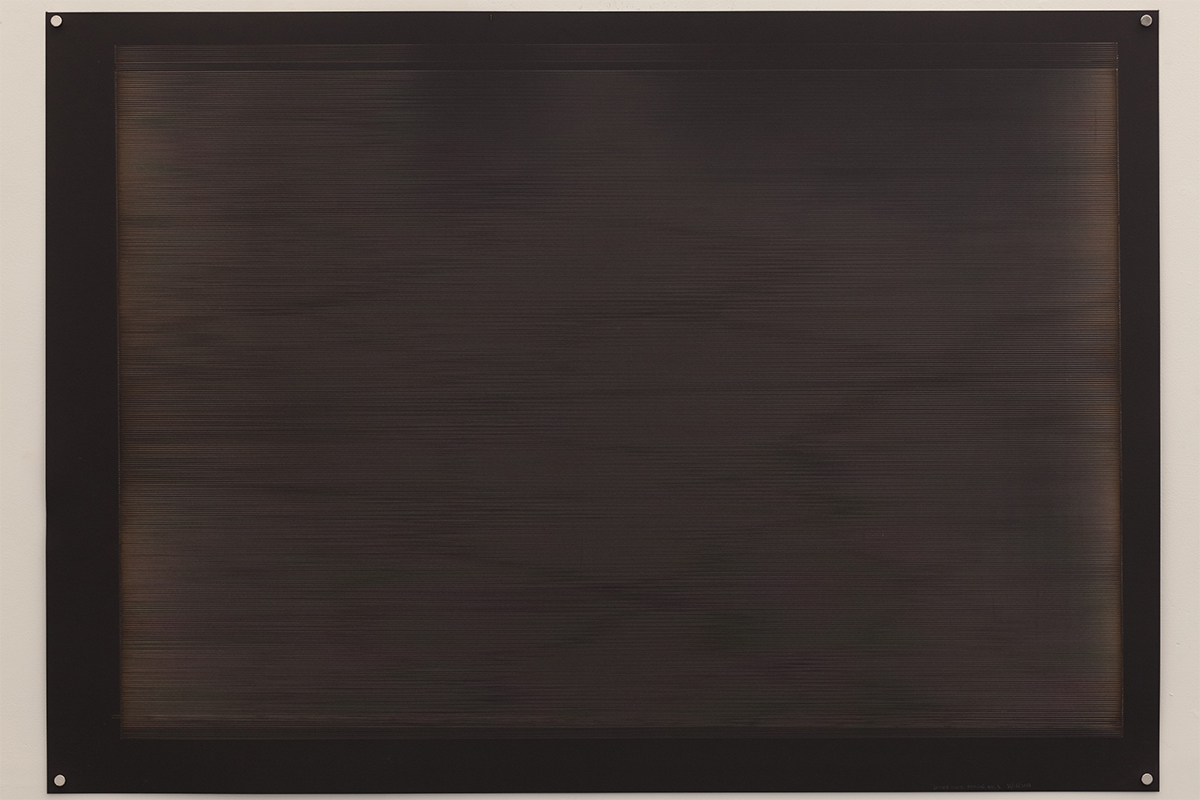
This drawing is a Steve Reich inspired line phase. It is comprised of two sets of lines. Each line in the first set had a duration of 3013 milliseconds (just over 3 seconds). For the second pass the duration of each line was 2987 milliseconds. This difference of 26 milliseconds means that the lines produced gradually come together then drift apart again producing the phase pattern that you see here. If you look carefully you’ll see that its four or five cycles of lines coming together and drifting apart across the whole drawing. The fine line that you can produce when drawing with a laser makes the phase pattern far clearer than when I’ve done similar drawings with a felt tip pen.
Another approach that I used to produce the work in this exhibition involved pointing the laser at a speaker with a mirror glued onto it.

By angling the speaker at forty five degrees to the laser beam and player audio through the speaker I was able to ‘record’ the waveform of the audio in lines on paper.
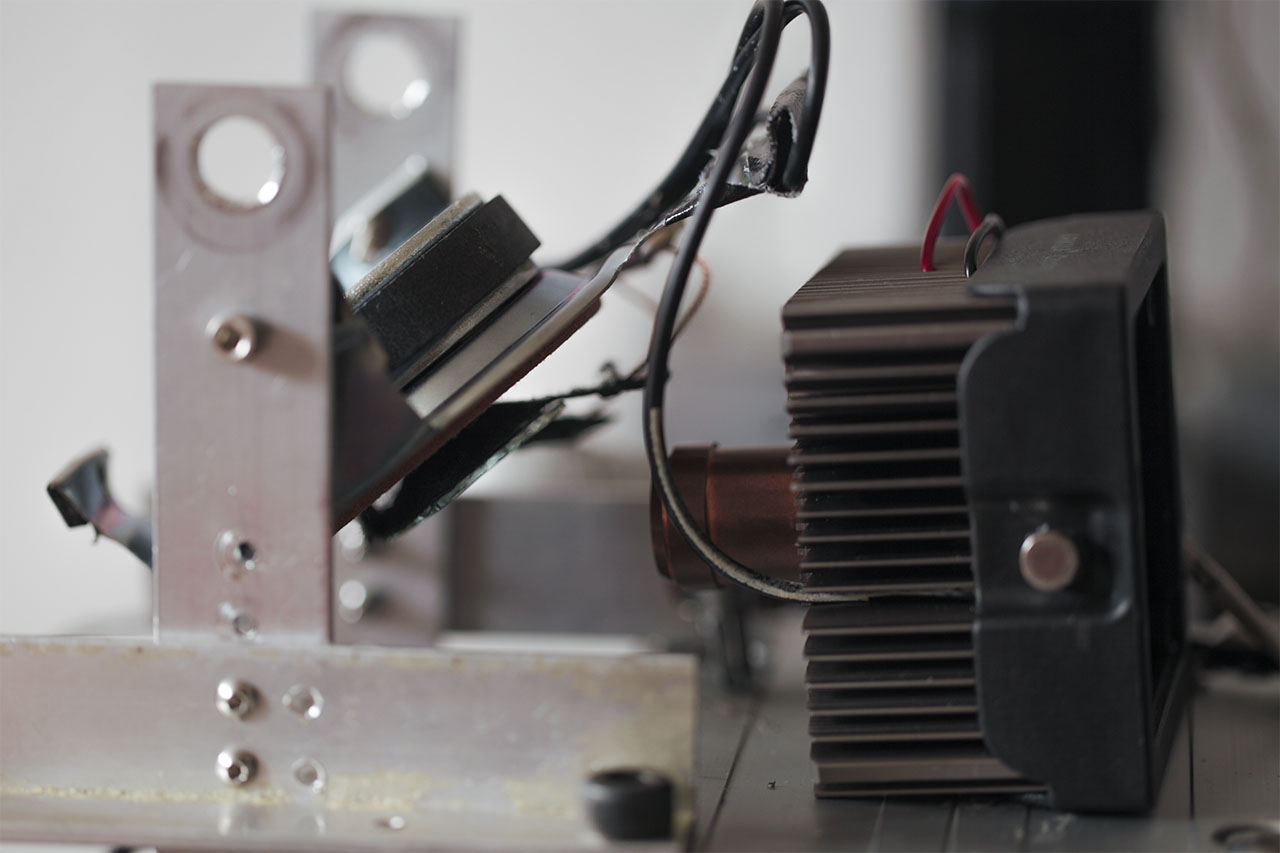
You can see something of those waveforms in this drawing:
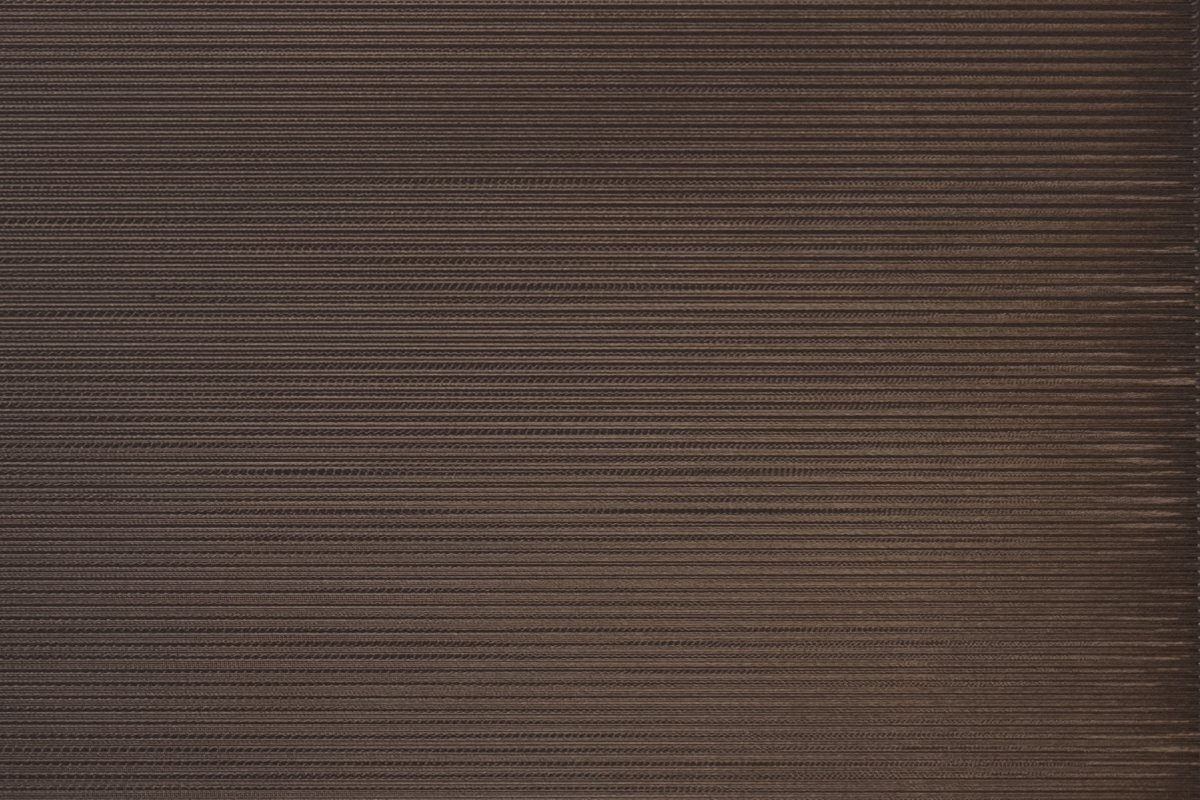
And the full drawing
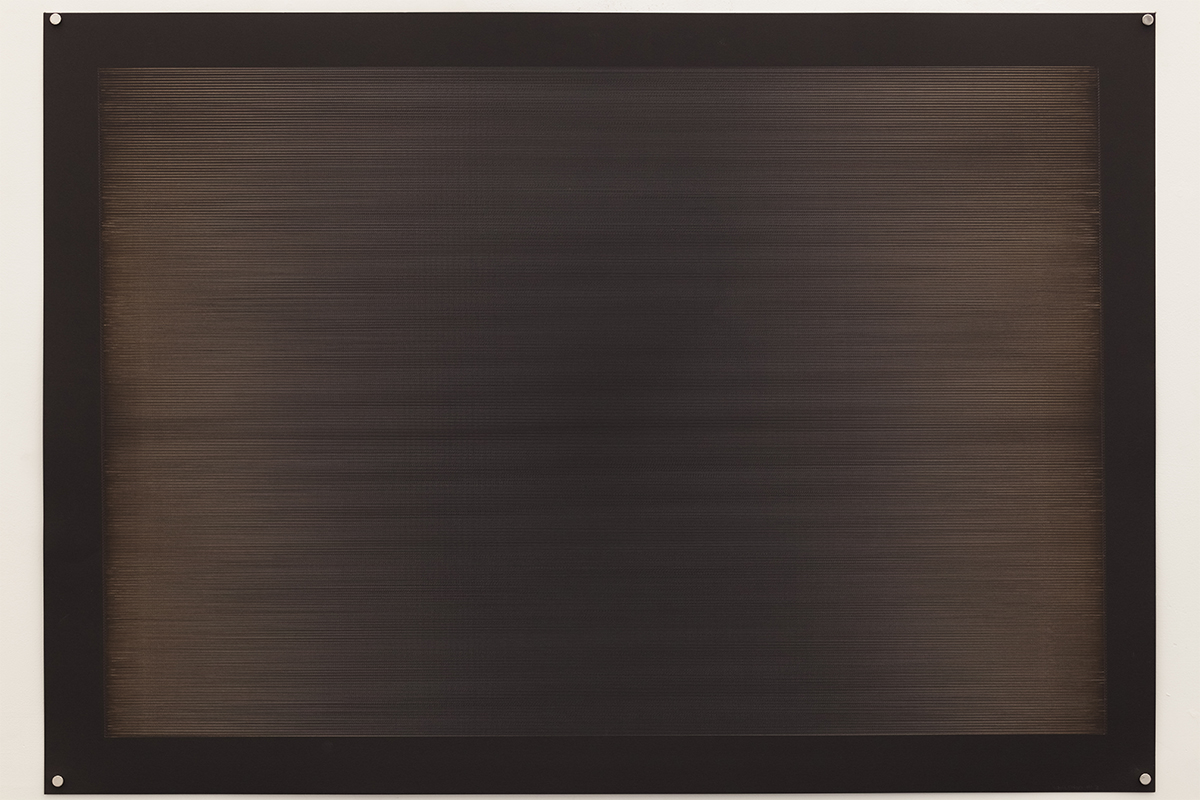
The video work in this exhibition involved burning intermittent lines through 200gsm black paper which I then placed over a LCD screen to create a low resolution video work. The work is called In Flames: Windy Chaos (2015).

This project has been assisted by the Australian Government through the Australia Council for the Arts, its arts funding and advisory body, and by the Visual Arts and Craft Strategy, an initiative of the Australian, State and Territory Governments.
